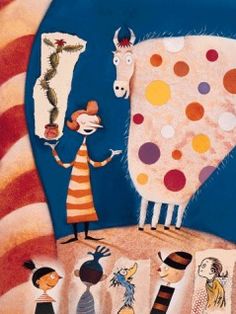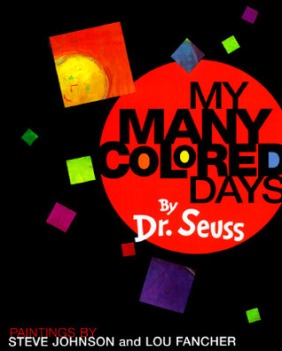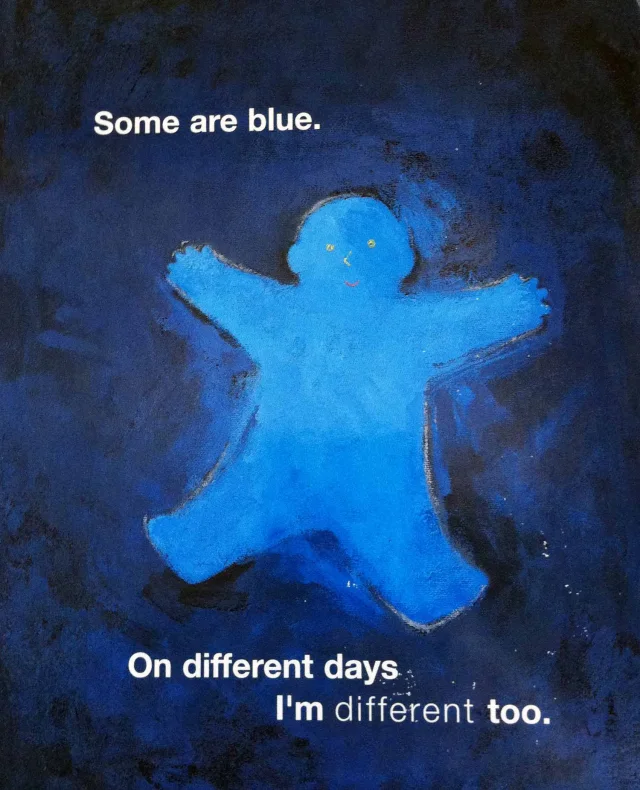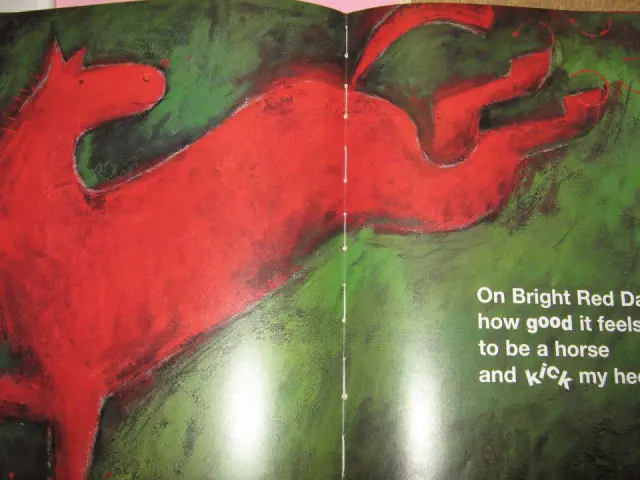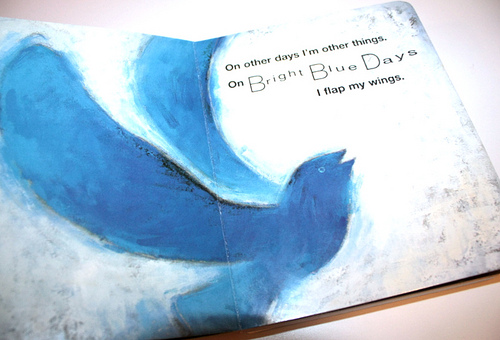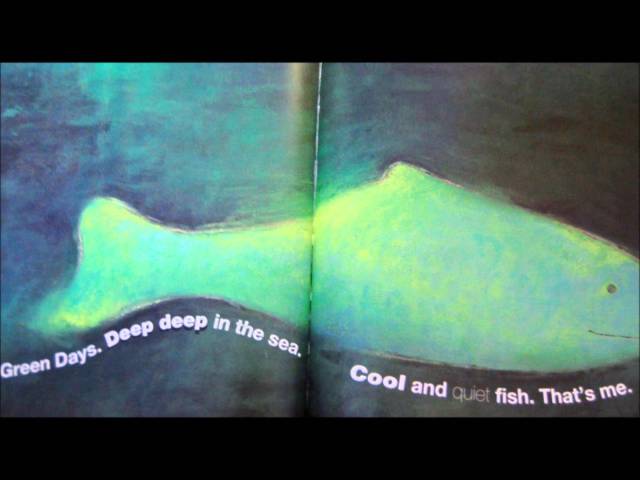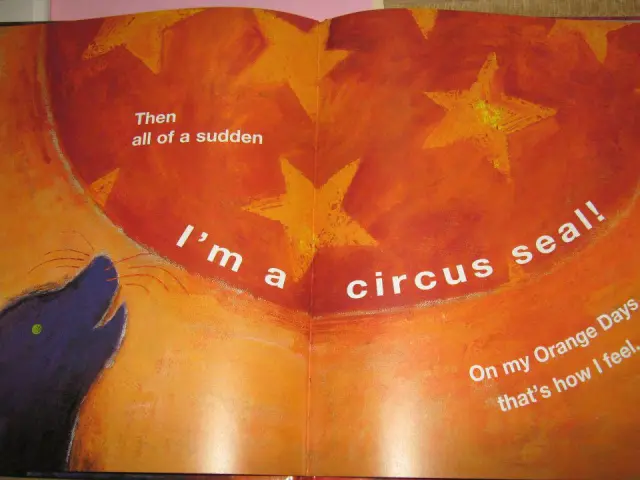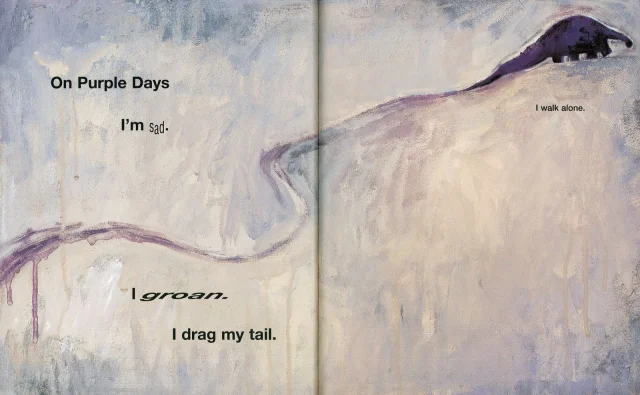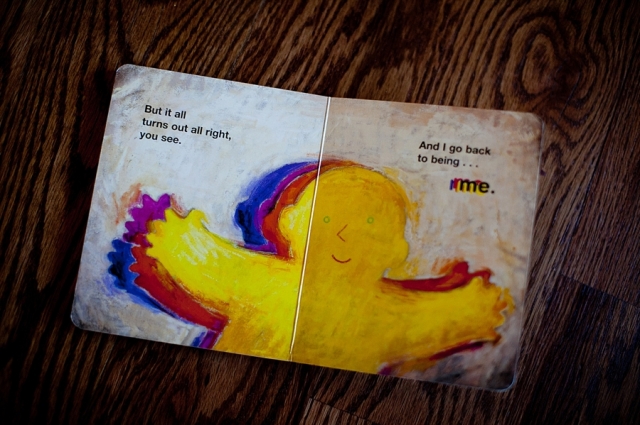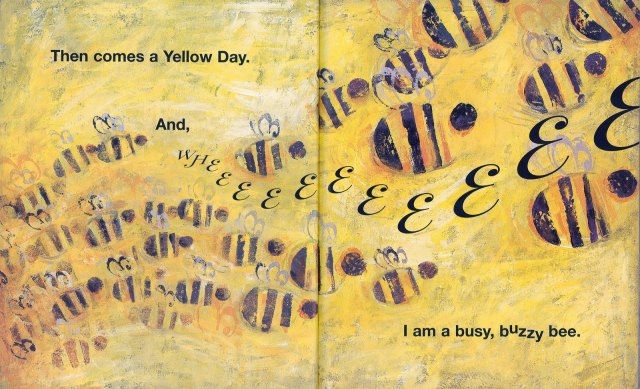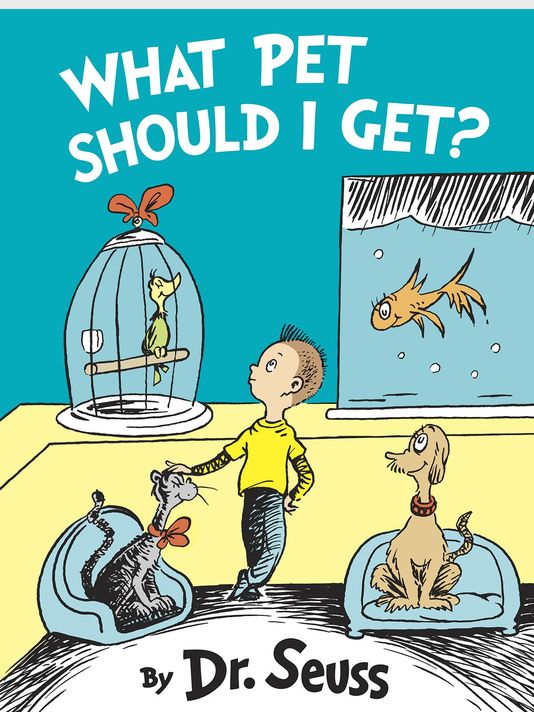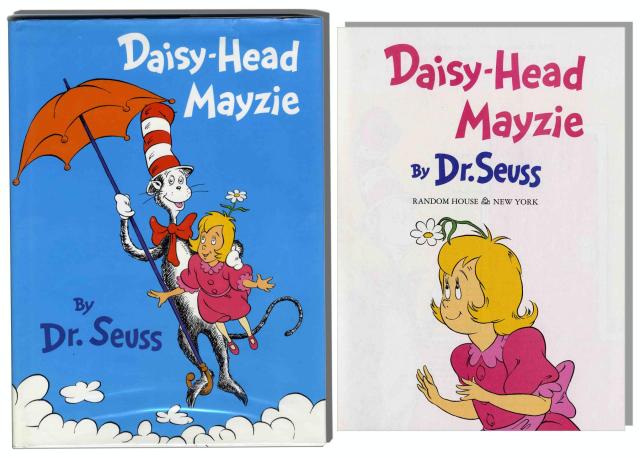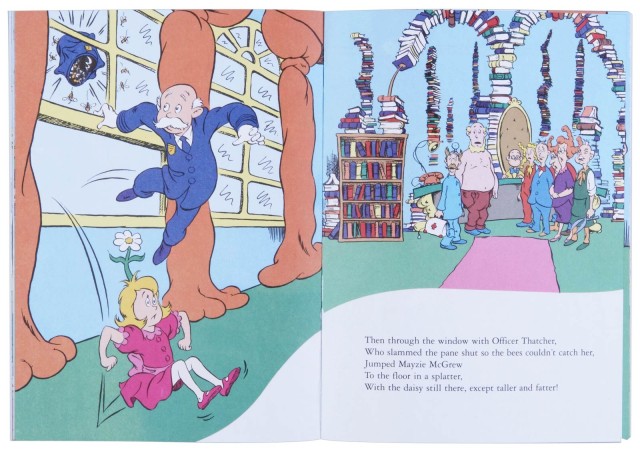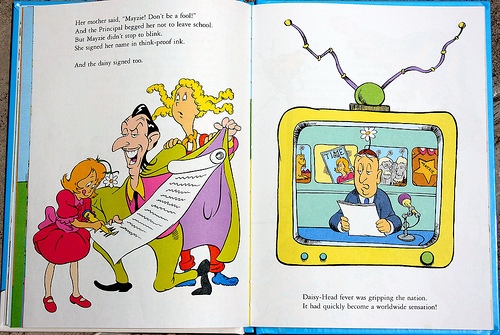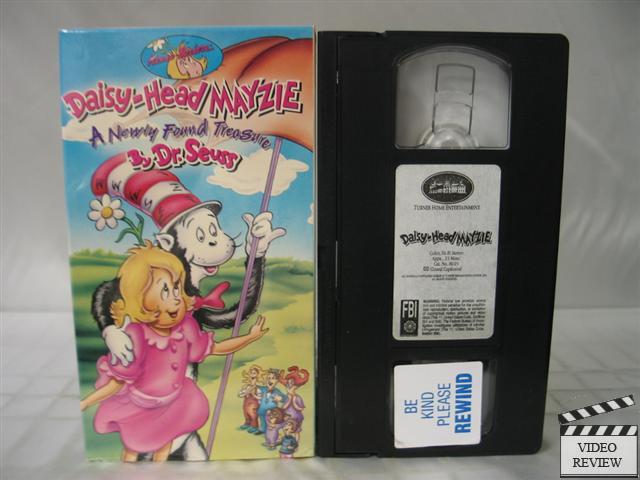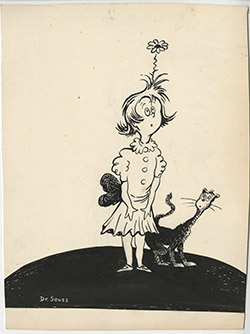
Published by Random House 2011
Introduction by Charles D. Cohen
SUMMARY:
This is a rather large post, because there are seven stories included. Feel free to skip the Summary section and head straight to the History section below to learn more about this wonderful collection of Seuss stories.
THE BIPPOLO SEED
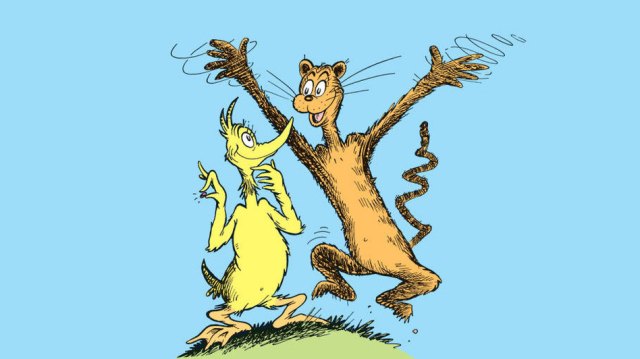
One day a lucky duck named McKluck found an old, small, silver box. On top of the box was written:
“Who finds this rare box will be lucky, indeed
For inside this box is a Bippolo Seed!
Plant it and wish! And then out up to three!
Whatever you wish for, whatever it be
Will sprout and grow out of a Bippolo Tree!”
McKluck decided he didn’t need much, just enough duck food for a week. So he dug a hole in the ground, but before he could drop in the seed he was interrupted by a large cat.
The cat convinced McKluck to wish for 500 pounds of duck food so that they could go into business together selling the food that the duck wouldn’t need!
“I never thought much about money till now.
But, golly, you’re right.
With some money, gee whiz,
Why, I’d be the happiest
duck that there is!”
Just as the duck was about to throw the Bippolo Seed into the hole the cat told him to think of even more stuff to wish for. So, the duck went on listing things that he wanted. He decided he and the cat would have a store where they cold sell all of it in the Notions Department!
“Then his mouth started steaming, his tongue got so hot.
But the more that he wished, the more greedy he got.”
The duck went on wishing until he yelled:
“Say, I’ll be the richest young duck in this world!”
And he got so excited that in a crazy dizzy twirl he waved his arms and the Bippolo Seed slipped out and flew into the river nearby where it sank and drifted away. The cat and the duck both dived in to look for it, but they never found it again.
“But if they should find one, that cat and that duck
Won’t wish for so much. And they’ll have better luck.”

THE RABBIT, THE BEAR, AND THE ZINNIGA-ZANNIGA

This parable of sorts starts with a “very big bear” that tries to eat a little rabbit. As the bear is approaching, the rabbit realizes he needs to think quick to get out of this predicament. He counts out loud to nine then stops and says:
“Only nine…? That’s a very bad sign! Poor bear!”
Then he counts again, but this time all the way up to ten. The bear is suspicious and asks if the rabbit is trying to say something is wrong with him. The rabbit admits that he is concerned for the bear, because he seems to only have nine eyelashes on one eye while he has the usual ten on the other. The bear is is not sure if he should be concerned at first, but the rabbit starts to play it up, like it is a big problem.
“‘And I guess that’s the reason,” the rabbit then said,
‘For the lop-sided way that you’re holding your head.
It’s twisted! It’s sagging! Because of the weight
of your un-even lashes, you can’t hold it straight!”
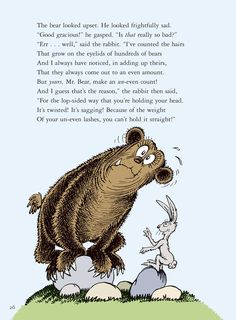
Now the bear starts to worry. The rabbit keeps pointing out other ailments like a fuzzy tongue, a wuzzy brain, and a creaking backbone.
“Oh, the lack of an eyelash can make you a wreck.
The lack of an eyelash can break a bear’s neck!
Who knows what might happen! You may fall apart!
be careful, poor bear! Don’t you even dare cough
Or your feet and your tail and your nose may fall off!”
The bear starts to panic and asks for a solution to his problem. How can he get one more eyelash to grow? The rabbit points out that they are standing under a Zinniga-Zanniga Tree! He tells the bear that the juice of the flower of a Zinniga-Zanniga Tree is used to cure a number of ailments.
“Whooping Cough! Croup! Also colic and sprains
Chickenpox! Smallpox! And bellyachee pains!
There’s nothing, they say, that this juice cannot do.
So I think, Mr. Bear, it’s the right juice for you.”
He tells the bear to pick a flower and hold it up to his eye and then, in a few hours, he’ll be cured. While the bear holds the flower up to his face the rabbit runs away. As he sprints to safety he says:
“It’s always the same
when you fight with Big Guys…
A bit of Quick-Thinking
counts much more than size!”
GUSTAV, THE GOLDFISH
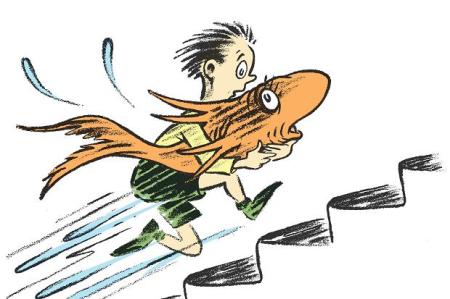
Gustav, the Goldfish is a none-stop thrilling tale of a young boy and his rapidly growing gold fish. When our narrator bought Gustav, the man that sold him was very specific about the feeding:
“Take care! When you feed this small cuss
Just feed him a spot. If you feed him a lot,
Then something might happen! It’s hard to say what.”
But the boy was conflicted, because Gustav always seemed so hungry. So, one day he decided to dump in the whole box of fish food! He knew right away that something was wrong, because Gustav grew twice as long! Soon he was too big for his bowl, so our narrator put him in a large vase, but he kept growing. Next he put him in a large pot, but when the fish grew out of that he had to run Gustav up to the tub. Even the tub wasn’t big enough and the bathroom eventually overflowed with water.
Just as our hero thought he was going to drown, the door bursted open and they spilled down the stairs and into the cellar which filled up with water. At this point the boy ran up to the phone and called the man that sold Gustav to him. The man arrived quickly.
“With a lot of strange bottles tucked into his vest
And a thing on his back like a medicine chest.”
He headed straight for the cellar and worked on Gustav for over an hour! When he came up from the cellar he had Gustav back to his normal size in a small fishbowl. He told the boy that this time it was free, but if it happened again he would charge a large free. So, now our hero only feeds Gustav a spot of food and no more,
“‘Cause something might happen. And now I know what!“
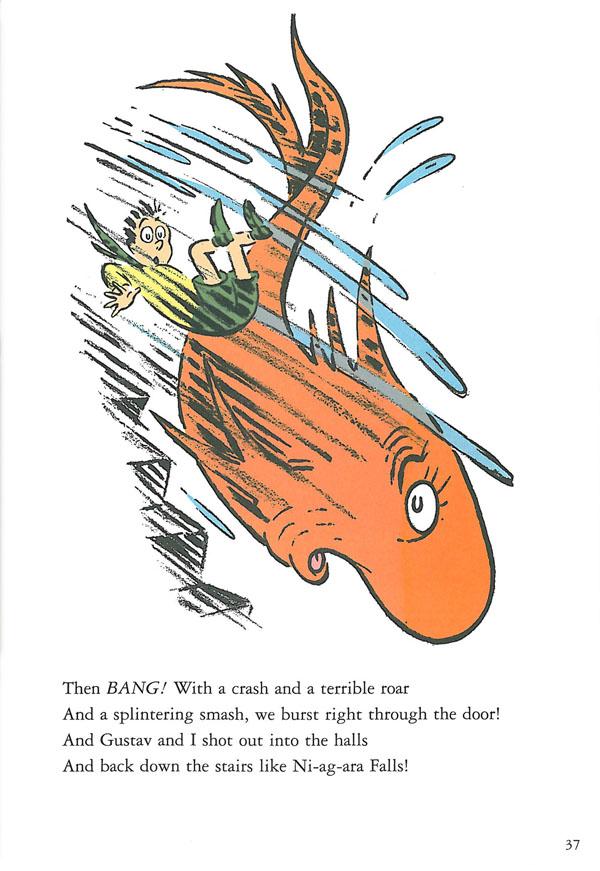 TADD AND TODD
TADD AND TODD
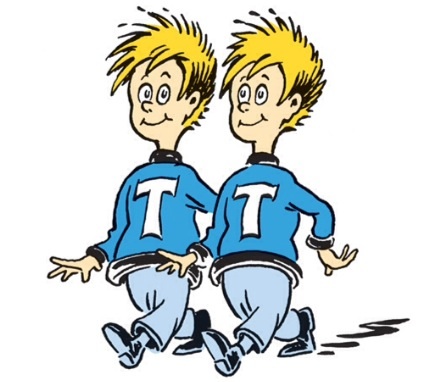
Tadd and Todd were two identical twins that no one could tell apart. Todd really enjoyed being identical, but Tadd did not. Tadd wanted to look different so he dyed his hair with red ink. When he showed it to Todd, Todd went ahead and did the same thing so they were back to looking exactly the same.
Tadd realized that if he wanted to look different he was going to have to dress different. So he added a false tail, took off one shoe, and put a rose between his toes. He decided this probably was not enough so he got a weird looking bird and pulled it on a string. He wanted to make sure that when he walked down the street everyone would know that he was Tadd and not Todd. He realized that even his few changes were probably not enough to positively make sure that everyone could tell them apart so he added A LOT more things!
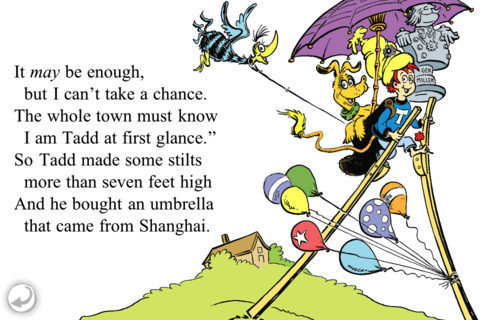
“And NOW I’ll run home and I’ll show brother Todd
We’re NOT like two peas in a silly old pod!”
But as soon as he got home he ran into Todd,
“And saw that his brother was dressed up quite neatly
Exactly like he was! Precisely! COMPLETELY!”
Todd reasoned out that he looks like Tadd and Tadd looks like him and they’ll never look different whatever they do. To this Tadd sort of smiled and they went back to being two peas in a pod.
“And still no one knows when they meet with these two
If this one is that one, or that one is this one,
Or which one is what one, or what one is who
STEAK FOR SUPPER
A boy was walking home down Mulberry Street and thinking about what he was going to have for dinner. He shouted out loud that they always have steak every Saturday night! His father had warned him to button his lip, because you never can tell who may be listening. Soon enough our hero had an IKKA following him.
He started to worry, because they steaks his family usually has are pretty small and he knew there wouldn’t be enough for the IKKA. Then to make it worse the Ikka told a GRITCH to come along because there would be plenty of steak! The Gritch invites a GRICKLE. He knew his mom would be upset that he had been bragging and been followed home with a bunch of unexpected guests.

To make matters worse the Grickle called out to a NUPPER and invited him a long for supper as well.
“I shivered. I wondered what Father would do
When I walked in the house with that terrible crew.
When Father saw them, there’s a very good chance
That I’d like get whaled on the seat of my pants.
And I guess if I did, it would serve me quite right
‘Cause I blabbed we had steak every Saturday night.”
Then the Nupper invited a couple of WILD WEEF. As our hero thinks of what his father and mother are going to do he opens the front door and smells stew instead of steak! The uninvited guests say Pooh to the stew and decide not to stay!
“And from that night to this I have never made slips.
I don’t talk when I walk, ’cause I’ve buttoned my lips.”
THE STRANGE SHIRT SPOT

In this story a boy gets a big gooey spot on his new shirt. He knows he needs to clean it before his mother sees. He starts by rubbing it with a towel which works! But now the spot has transferred to the towel! So he takes the towel to the bathtub, but now of course the spot stuck to the tub! He sweeps the tub with a broom and now the spot is stuck to the broom. Then thinking that he had a big rag our hero accidentally gets the spot stuck to one of his mother’s dresses!
“This spot! It was driving me out of my mind!
What a spot – what spot for a fellow to find!
My troubles were growing. The way it kept going!
Where would it go next? There was no way of knowing.”
Then the cat walks in and bums the dress and the spot jumps onto the cat’s back. So our hero chases the cat and they tumble down the stairs. Then he got an idea! He would put the cat outside so the spot would finally be out of the house! But before he got to the door her realized that the spot was back on his shirt from picking up the cat! Right then his mother comes home and he told her the whole story!
“…and she said ‘Well, I guess
You’re lucky you didn’t get terribly hurt.
But please, in the future, STAY OUT OF THE DIRT!”
THE GREAT HENRY MCBRIDE
” ‘It’s hard to decide,’
Said young Henry McBride
‘It’s terribly, terribly hard to decide.
When a fellow grows up and turns into a man,
A fellow should pick the best job that he can.
But there’s so many jobs that would be so much fun,
It’s terribly hard to decide on just one.’ “
First, Henry McBride thinks about what it would be like to be a farmer where he would raise giant rabbits and be the big Rabbit-Man, Henry McBride. But then he reflects that he’s too smart and clever to just tie himself down to only one job forever. So, for his second job he decides to be a doctor, the Rabbit-Man, Dr. McBride!
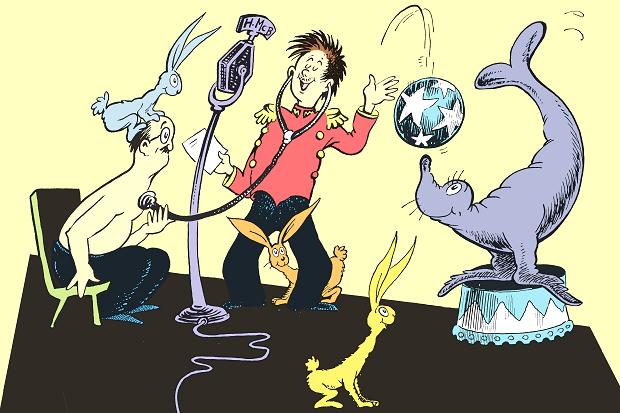
But if he can handle only two jobs then he can definitely do three! So he decides he’ll build a Radio Broadcasting Tower and be Broadcaster-Rabbit-Man-Doctor McBride! But he’s got lots of brains so he can take on four jobs! He’ll train seals for his fourth job! And of course cow-punching is great! So he’ll do that too! He’ll be the Seal-Training Doctor! The Broadcasting-Rabbit-Man, Two-Gun McBride!
“Yep! I’ll pick the very best job that I can
When I finally grow up and turn into a man.
But now…well, right now when I’m still sort of small,
The best job is dreaming, with no work at all.”
HISTORY:
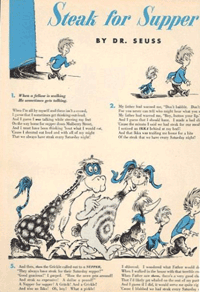 You will not find Charles D. Cohen’s name on the cover of The Bippolo Seed and Other Stories because he is a true and honest Dr. Seuss fan through and through. He knows these stories were written by Seuss and that he should get all the credit. Charles D. Cohen may be my personal hero. He is the author of one of my source books The Seuss, The Whole Seuss, And Nothing But The Seuss.
You will not find Charles D. Cohen’s name on the cover of The Bippolo Seed and Other Stories because he is a true and honest Dr. Seuss fan through and through. He knows these stories were written by Seuss and that he should get all the credit. Charles D. Cohen may be my personal hero. He is the author of one of my source books The Seuss, The Whole Seuss, And Nothing But The Seuss.
The Bippolo Seed and Other Stories does include a forward by Charles D. Cohen explaining how these stories came about. Through lots of research and by traveling to several libraries, Cohen was able to put together a collection of short stories that Seuss wrote from 1948 through 1959 for various magazines.
In the forward Cohen tells us about a woman that wrote to Seuss four months before he died saying that, as a child, she loved “The Bippolo Seed” and was wondering if it was ever going to be published in a book. Seuss wrote her back and
“thanked her ‘for still liking that old story’ and explained, ‘For some reason or other it never found its way into a book. But, since you still like it, maybe now it will!‘ Twenty years later, his hopeful prediction has finally come true.”
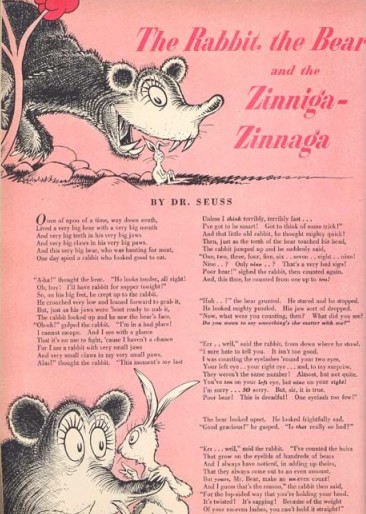
Charles D. Cohen also reveals that the book A Fish Out of Water by Helen Palmer (Seuss’ first wife) was based on Seuss’ story Gustav the Goldfish.

The two stories are identical in plot points, but Helen’s story does not rhyme and is illustrated by P.D. Eastman (writer and illustrator of Go, Dog, Go! and Are You My Mother?) The illustrations are almost identical in format, but very distinct in style.
 Below is the 1950 Redbook original version of the story. This new collection of Seuss stories includes his original illustrations from this Redbook version and gives the story back it’s rhythm and rhyme.
Below is the 1950 Redbook original version of the story. This new collection of Seuss stories includes his original illustrations from this Redbook version and gives the story back it’s rhythm and rhyme.

“The Strange Shirt Spot” is obviously familiar. This story was originally published in Redbook in 1951, but Seuss developed it even further in The Cat in the Hat Comes Back in 1958.

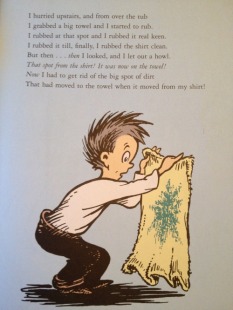
“These stories reflect a change in Ted’s [Seuss’s real name] approach to writing for children. Before World War II, he did not consider his children’s books particularly important. But after observing German and Japanese children reared on propaganda (which he called ‘the worst educational crime in the entire history of the world’), he began to take his work more seriously, developing a new philosophy about educating children through reading.” – Charles D. Cohen
Cohen also explains that these stories mark a transition in his rhyming style as well. Many of his earliest books do not rhyme, but after a very young child in Salt Lake City, Utah was able to recite Thidwick the Big Hearted Moose in it’s entirety just from hearing it, Seuss realized that the sound of the words was just as important as the visuals he drew to go along with them.
I absolutely love this wonderful collection of stories by Dr. Seuss. Cohen has put together a time capsule and a wonderful insight into how Seuss developed over the years. Cohen hasn’t stopped there. There is a second collection Horton and the Kwuggerbug and More Lost Stories which I will write about in my next post!
Here is a link to a great list of Seuss Redbook publications.
http://1stedition.net/blog/2006/06/dr_seuss_redbook_magazine_orig.html
FAVORITE QUOTE:
“Yep! I’ll pick the very best job that I can
When I finally grow up and turn into a man.
But now…well, right now when I’m still sort of small,
The best job is dreaming, with no work at all.”
– From The Great Henry McBride
FAVORITE IMAGE:
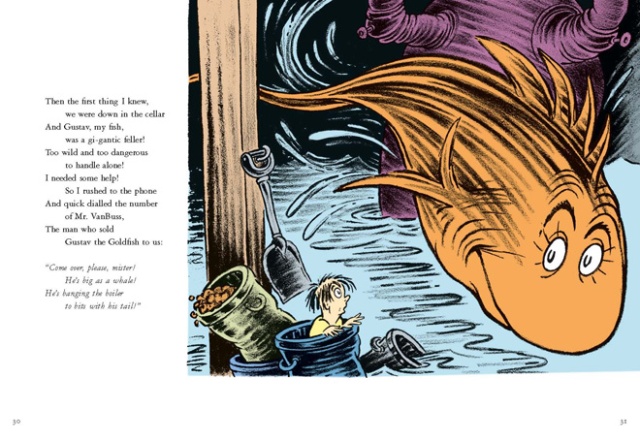
Thanks for reading,
Jack St.Rebor
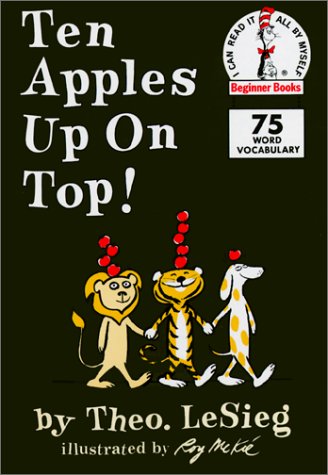
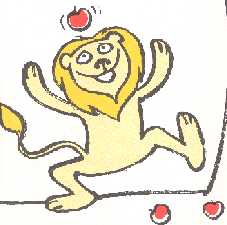
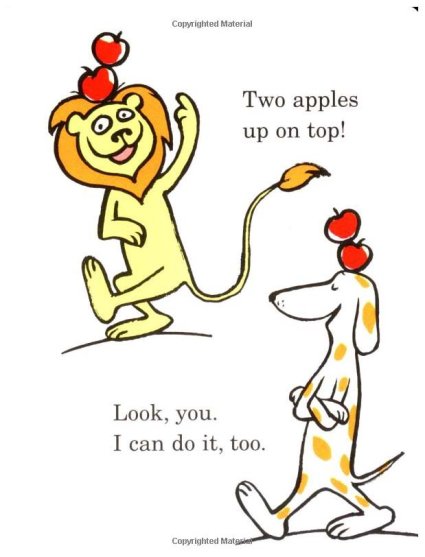
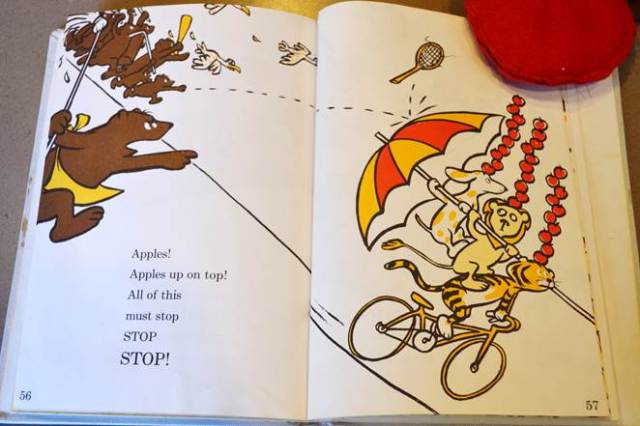
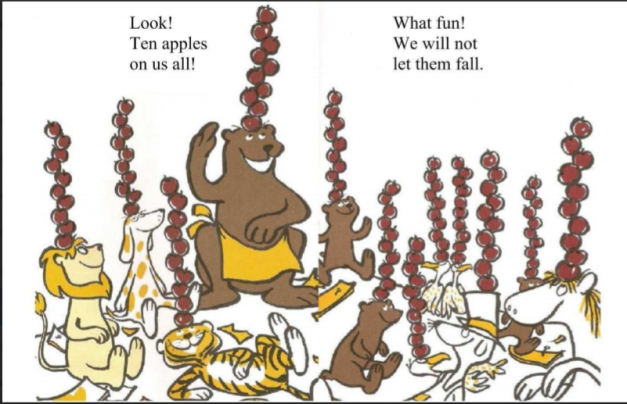
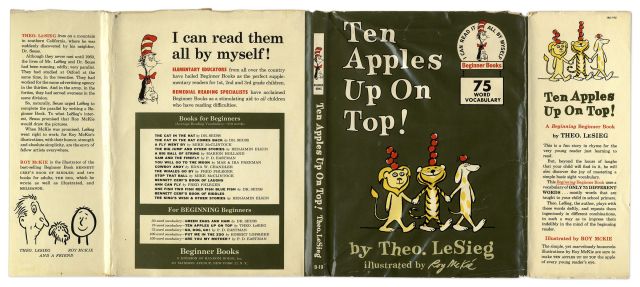
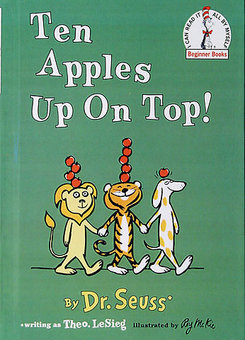
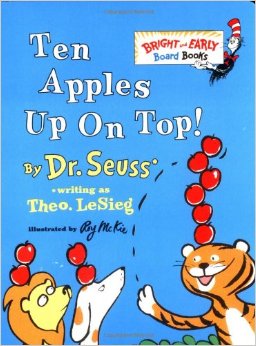

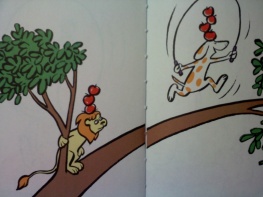
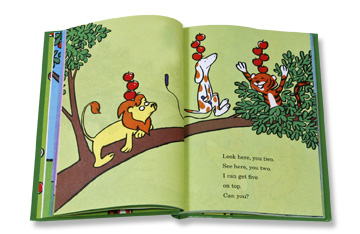
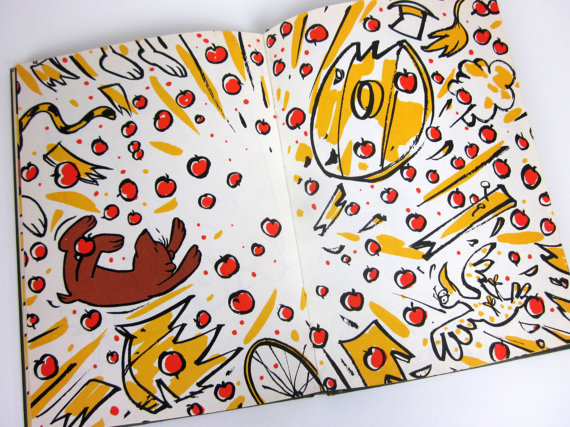


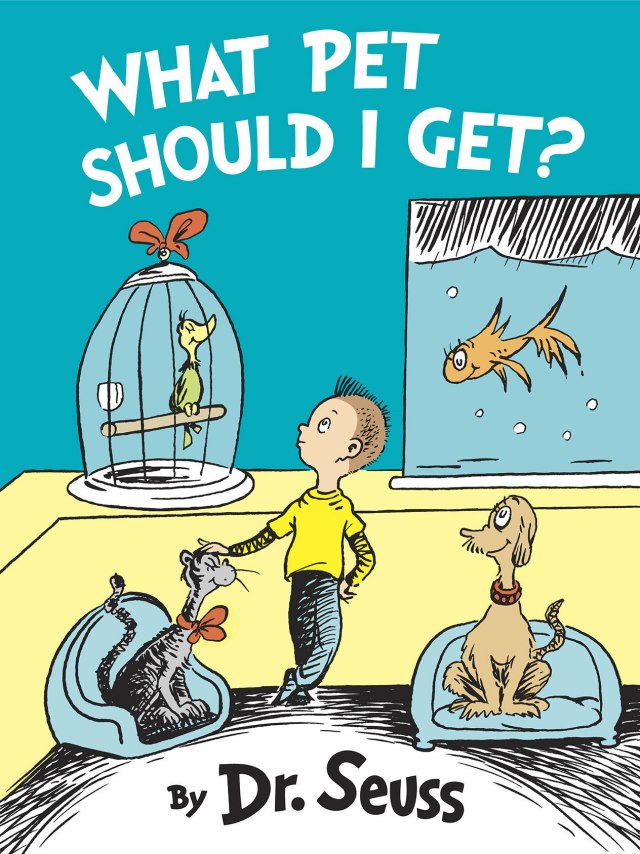
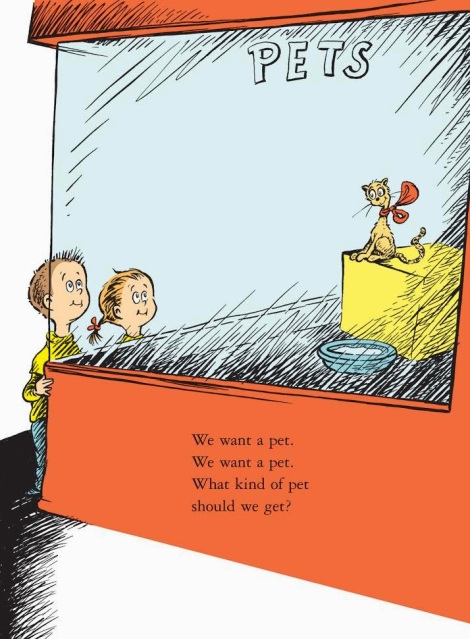
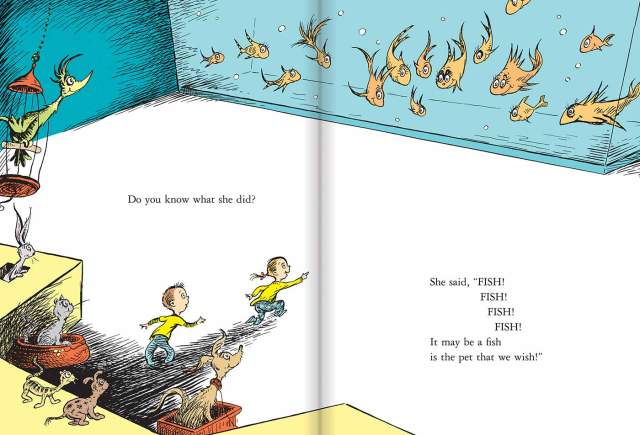
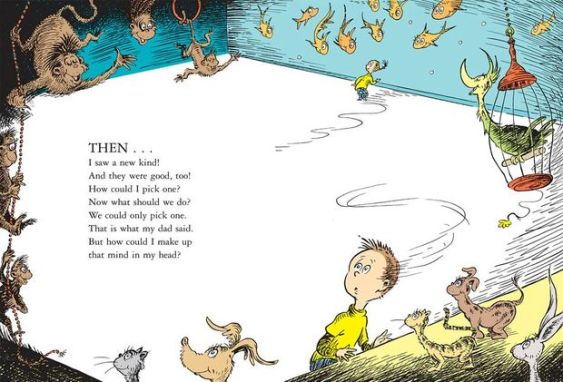
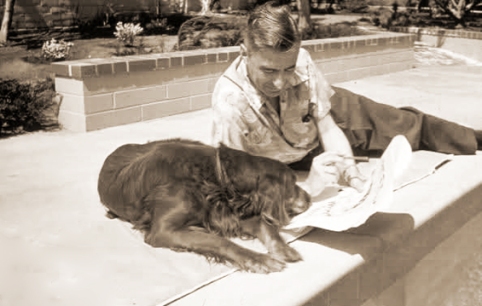
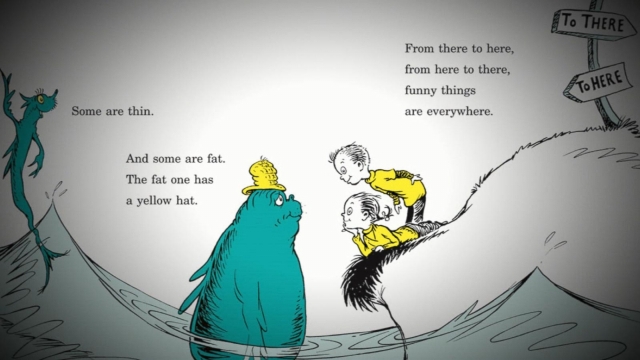
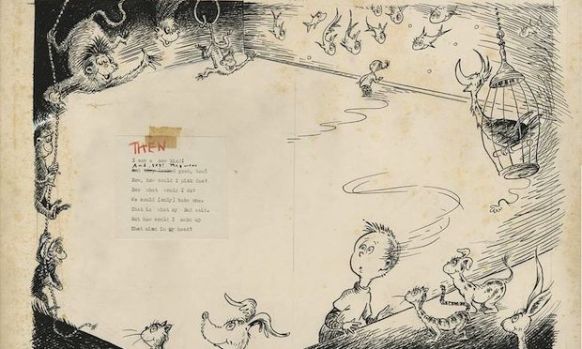
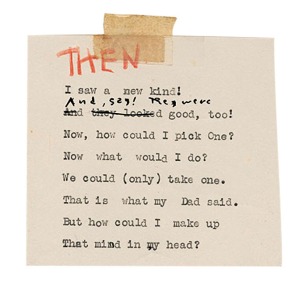
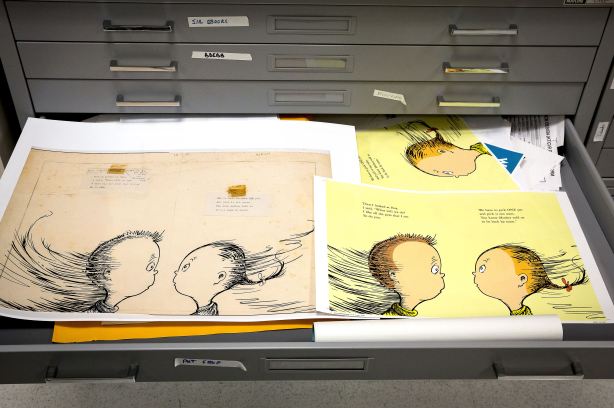
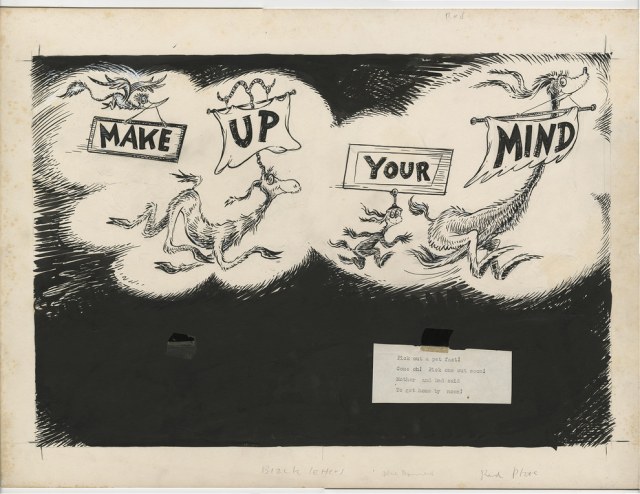

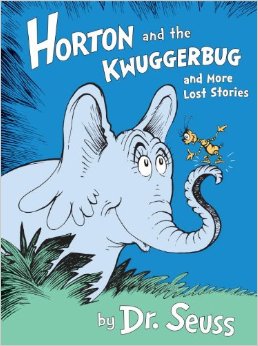
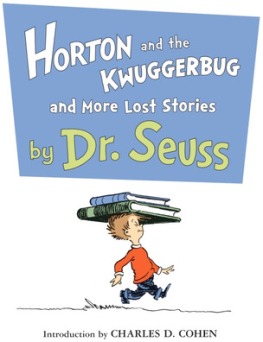
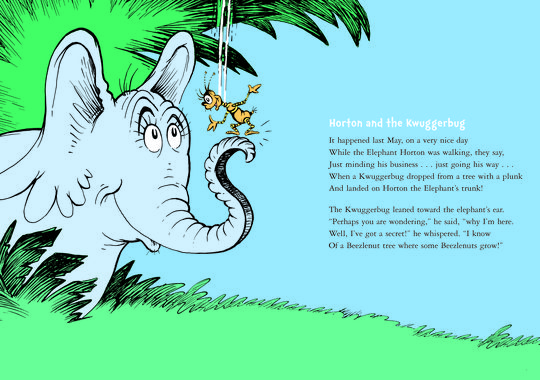
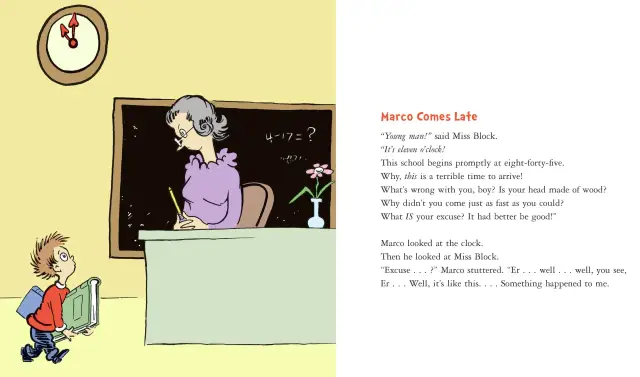
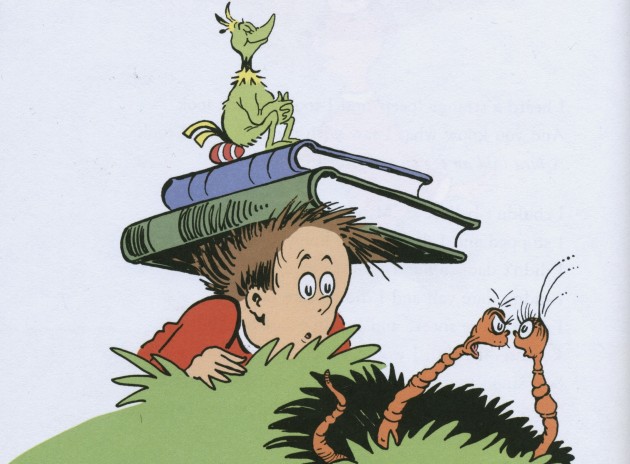
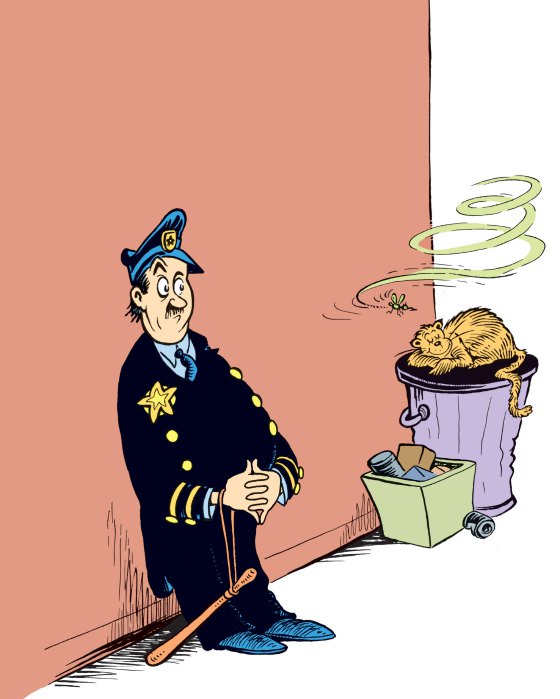
 He’ll toss a fish into the face of a horse pulling a wagon of pumpkins. The pumpkins will spill out onto the head of Jake Warner who is fixing a hydrant on the corner. Jake will wrench the wrong way and the water will gush onto Mrs. Minella who will open her umbrella. The Umbrella will knock Bobby Burke of his bike and he’ll fall onto the ladder of a house painter who will drop a can of paint onto the head of Don dill. This will upset Mrs. Hubble who will drop her dishes. When they crash on the ground her dog will be startled and jump in the horn on old Horn-Tooter Fritz…
He’ll toss a fish into the face of a horse pulling a wagon of pumpkins. The pumpkins will spill out onto the head of Jake Warner who is fixing a hydrant on the corner. Jake will wrench the wrong way and the water will gush onto Mrs. Minella who will open her umbrella. The Umbrella will knock Bobby Burke of his bike and he’ll fall onto the ladder of a house painter who will drop a can of paint onto the head of Don dill. This will upset Mrs. Hubble who will drop her dishes. When they crash on the ground her dog will be startled and jump in the horn on old Horn-Tooter Fritz…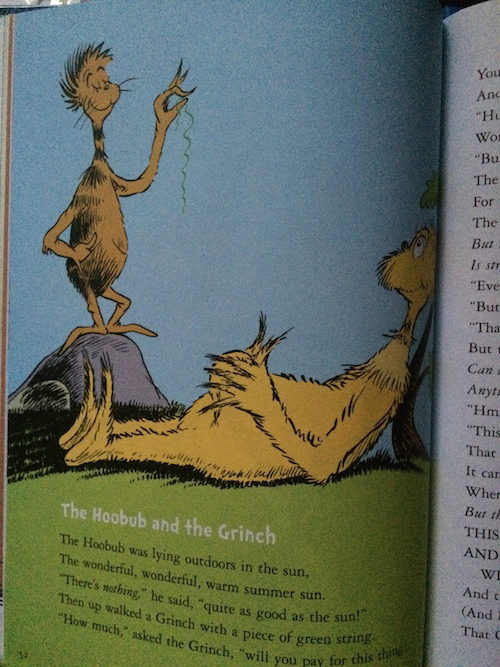
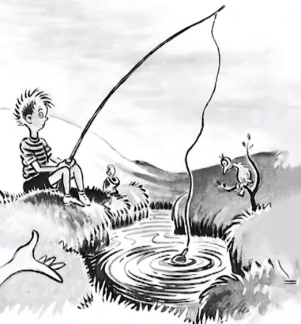
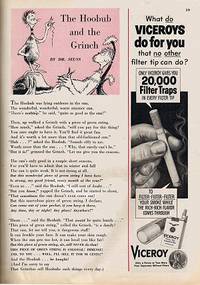 Two years later we learned
Two years later we learned 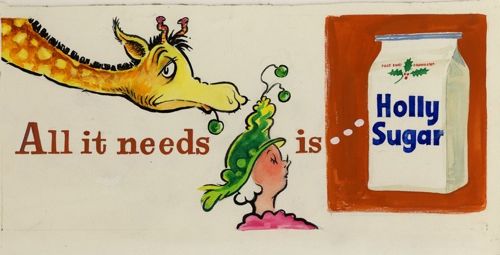
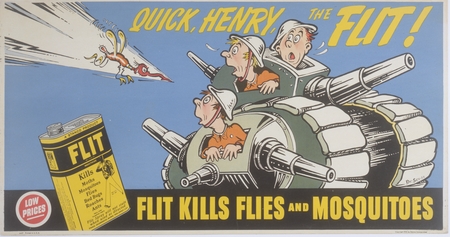
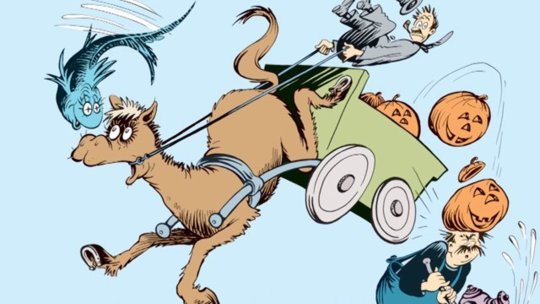
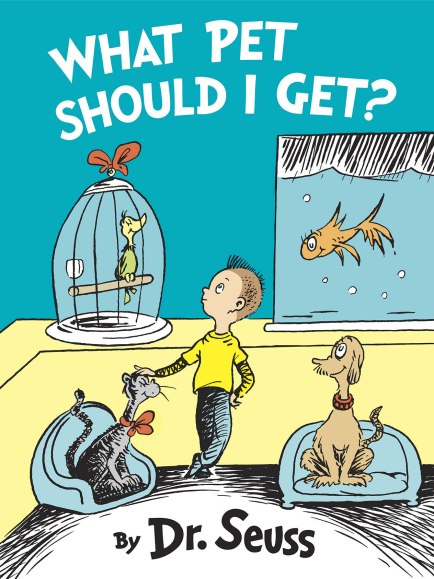












 You will not find Charles D. Cohen’s name on the cover of The Bippolo Seed and Other Stories because he is a true and honest Dr. Seuss fan through and through. He knows these stories were written by Seuss and that he should get all the credit. Charles D. Cohen may be my personal hero. He is the author of one of my source books The Seuss, The Whole Seuss, And Nothing But The Seuss.
You will not find Charles D. Cohen’s name on the cover of The Bippolo Seed and Other Stories because he is a true and honest Dr. Seuss fan through and through. He knows these stories were written by Seuss and that he should get all the credit. Charles D. Cohen may be my personal hero. He is the author of one of my source books The Seuss, The Whole Seuss, And Nothing But The Seuss.






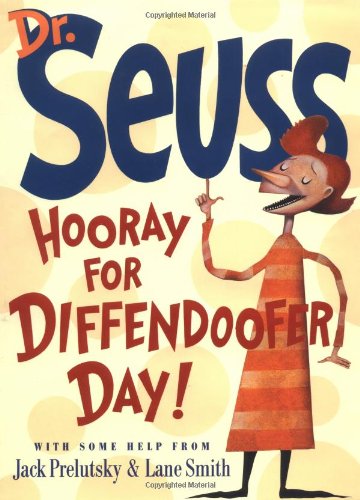
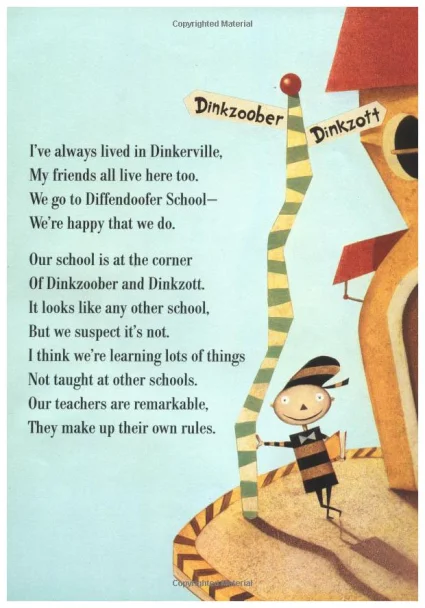

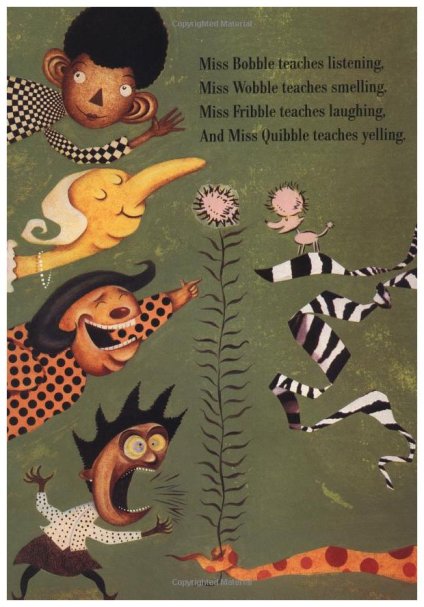
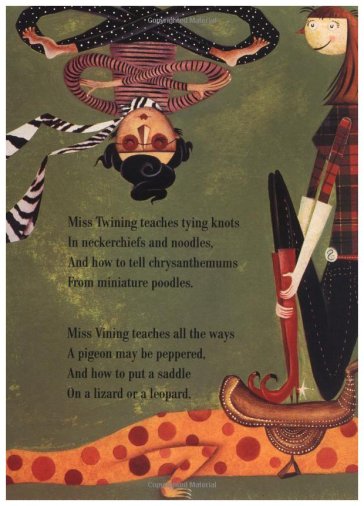
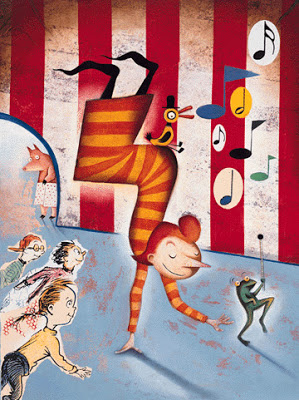
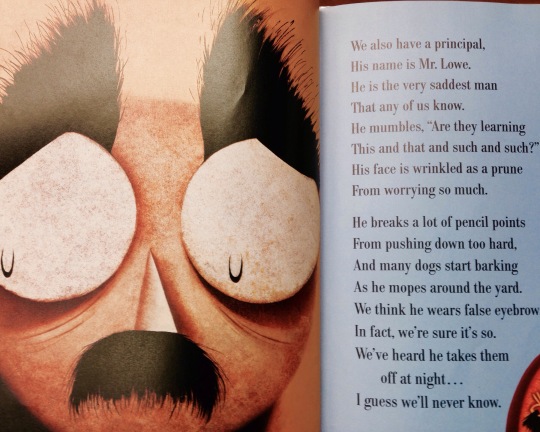
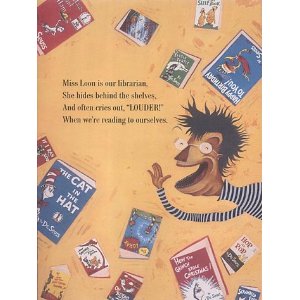

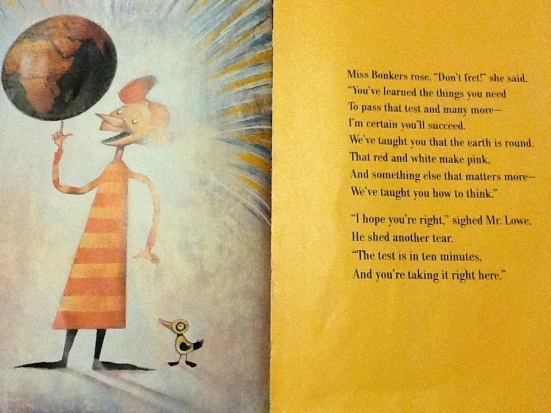
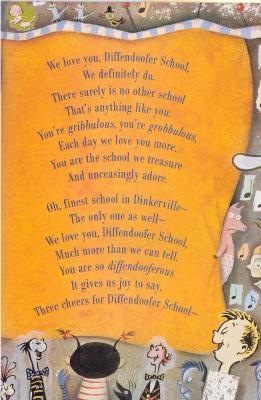
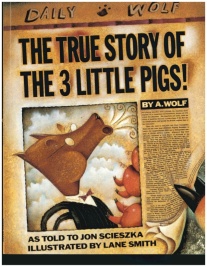
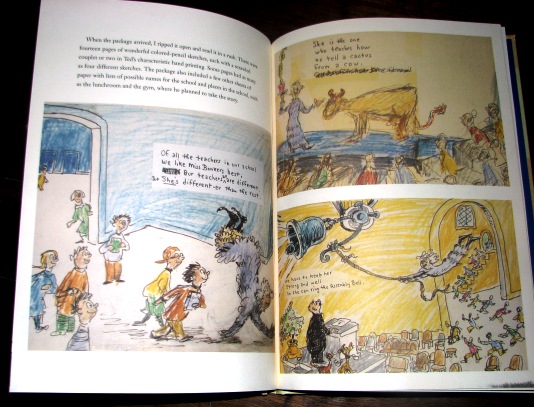 Schulman also points out that much of the story was actually written by Prelutsky, but fits shockingly well with Seuss’s drafts. The illustrations are obviously mostly Smith’s, but there are clear Seuss elements, inspiration, and actual mixed-media-pasted-in images from Seuss’ previous works. The whole book has a beautiful structure and is a fitting tribute without trying to copy Seuss (like Daisy-Head Mayzie), but still includes Seuss style (unlike My Many Colored Days.)
Schulman also points out that much of the story was actually written by Prelutsky, but fits shockingly well with Seuss’s drafts. The illustrations are obviously mostly Smith’s, but there are clear Seuss elements, inspiration, and actual mixed-media-pasted-in images from Seuss’ previous works. The whole book has a beautiful structure and is a fitting tribute without trying to copy Seuss (like Daisy-Head Mayzie), but still includes Seuss style (unlike My Many Colored Days.)